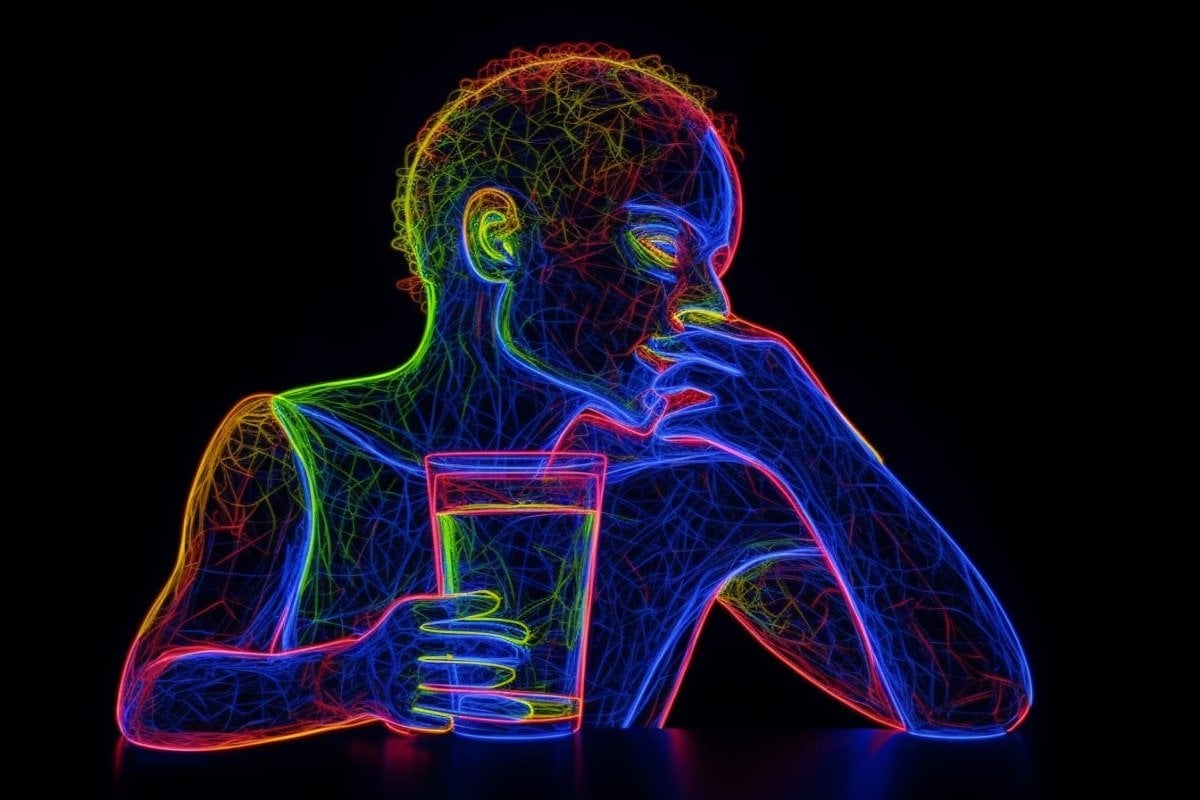Summary: Young adults who heavily consumed alcohol during their teenage years exhibited thinner cortical gray matter and modified neurotransmission.
Utilizing MRI and TMS-EEG technology, the researchers identified lower gray matter thickness and increased N45 potential, indicative of inhibitory GABA and excitatory glutamate neurotransmitter activity.
This study underlines the long-term, detrimental impact of adolescent heavy drinking on adult brain structure and function. More research is required to unveil the underlying mechanisms.
Key Facts:
- The study demonstrated that heavy drinking in adolescence can lead to a reduction in cortical gray matter thickness in adulthood.
- Increased N45 potential, representing inhibitory GABA and excitatory glutamate neurotransmitter systems activity, was observed in young adults with a history of heavy drinking.
- Particularly affected areas due to heavy drinking were the frontal and parietal lobes of the brain.
Source: University of Eastern Finland
During adolescence, the brain undergoes intense development and is particularly susceptible to the deleterious effects of alcohol use. According to findings from a recent follow-up study in Finland, young adults whose heavy drinking began in adolescence have lower cortical gray matter thickness and altered neurotransmission.
The findings were published in Alcohol: Clinical and Experimental Research.
Previous research has shown that repeated binge drinking in adolescence is associated with changes in the central nervous system in adulthood, including lower gray matter volume and greater inhibitory neurotransmission.
The present study is the first to explore the association between gray matter thickness and neurotransmission.

The study included 26 young adults who had a history of heavy drinking, as well as 21 controls who consumed little or no alcohol at all. The study participants were followed for 10 years, from the age of 13-18 until around the age of 25.
Changes in gray matter volume were measured from magnetic resonance images of the brain, and cortical activity was measured using simultaneous transcranial magnetic stimulation and electroencephalography (TMS-EEG).
In adolescents with a history of heavy drinking, the researchers observed lower mean gray matter thickness in several regions of the brain, as well as a greater mean N45 potential, when compared to adolescents who consumed little or no alcohol at all.
The N45 potential is reflective of the activity of the inhibitory GABA and the excitatory glutamate neurotransmitter systems.
In the heavy-drinking group, lower gray matter thickness was associated with an increased N45 potential, especially in the frontal and parietal lobes.
According to the researchers, the results indicate that the thinning of the cerebral cortex observed in young adults with a history of heavy drinking since adolescence is associated with altered neurotransmission, especially in the frontal and parietal lobes. However, further research is needed to assess the mechanisms underlying these findings.
About this neurodevelopment research news
Author: Maj Vuorre
Source: University of Eastern Finland
Contact: Maj Vuorre – University of Eastern Finland
Image: The image is credited to Neuroscience News
Original Research: Closed access.
“Cortical thickness is inversely associated with transcranial magnetic stimulation-evoked N45 potential among young adults whose heavy drinking began in adolescence” by Virve Kekkonen et al. Alcoholism Clinical and Experimental Research
Abstract
Cortical thickness is inversely associated with transcranial magnetic stimulation-evoked N45 potential among young adults whose heavy drinking began in adolescence
Background
Adolescence is a particularly vulnerable stage of development in terms of the deleterious effects of alcohol. Both lower gray matter (GM) volume and greater GABAergic activity have been associated with chronic alcohol consumption during adolescence. However, the association between these measures has not been investigated.
Methods
In this exploratory study, we compared 26 young adults with a 10year history of heavy alcohol consumption with 21 controls who used little or no alcohol. Simultaneous transcranial magnetic stimulation and electroencephalography were used to assess transcranial magnetic stimulation-evoked N45 potentials, reflecting a balance between GABAergic inhibition and N-methyl-D-aspartate (NMDA) receptor-mediated glutaminergic excitation in the brain. GM thickness was measured from magnetic resonance images and GM and N45 potentials were then correlated.
Results
Cortical thickness was significantly lower in several brain regions in the heavy-drinking group than the light-drinking group. The N45 amplitude was significantly larger frontally in the heavy-drinking group. Among heavy drinkers, there were several statistically significant correlations between thinner GM and larger frontal N45 amplitudes that were not detectable in the light-drinking group. The strongest correlations were detected in the frontal and parietal lobes, especially in the left superior frontal gyrus and the left supramarginal gyrus, and in both hemispheres in the superior parietal lobes.
Conclusions
These findings show that a thinner cortex and greater inhibitory neurotransmission are correlated in certain brain regions among young, long-term heavy alcohol users. Studies are needed to explore the possible causal mechanisms underlying these effects.






